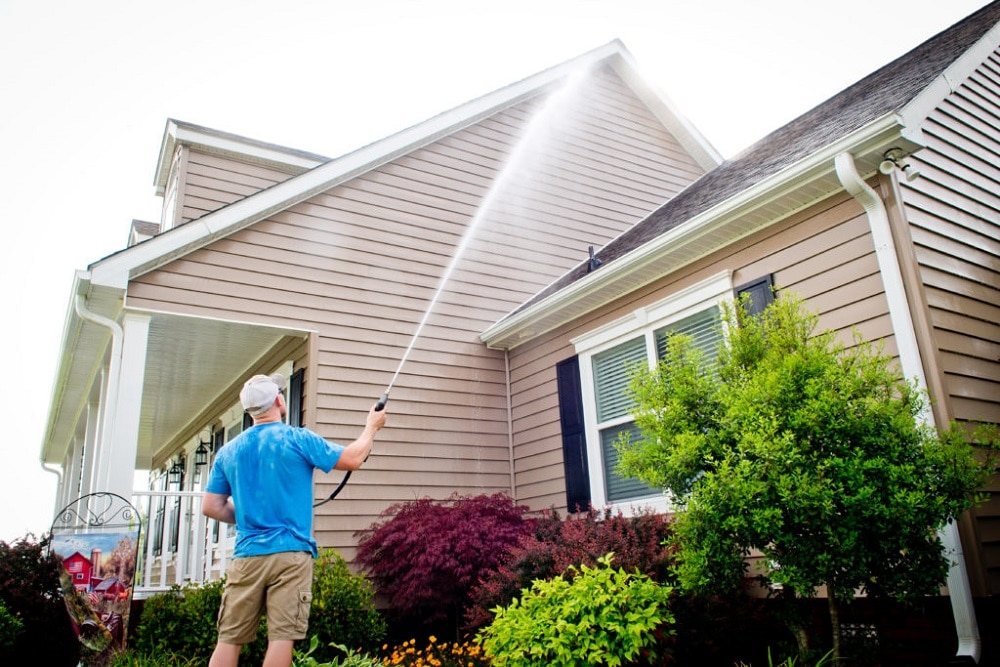Your home's exterior is its first impression and regular cleaning is key to preserving its beauty and structural integrity. In this comprehensive guide, we'll delve into the crucial question, How often should you wash your house exterior? We'll provide expert insights, practical advice, and a clear maintenance schedule to ensure your home always looks its best.
The Importance of Regular Exterior Cleaning
Regular exterior cleaning is essential for maintaining the overall appearance and integrity of your property. Here are three key reasons why it's important:
✅ Enhancing Curb Appeal:
First impressions matter, and the exterior of your property is the first thing people see. A clean and well-maintained exterior creates a positive impression on visitors, potential buyers, and passersby. It reflects pride of ownership and can make your property more inviting.
✅Preventing Damage and Decay:
Dirt, grime, algae, and other pollutants can accumulate on exterior surfaces over time. These can lead to deterioration and damage, especially on materials like wood, siding, and concrete. Regular cleaning helps to remove these contaminants, preventing them from causing long-term harm.
✅Preserving Property Value:
A well-maintained exterior can significantly impact the overall value of your property. Neglecting regular cleaning can lead to more extensive and costly repairs in the future. By investing in routine maintenance, you're safeguarding your property's value over the long term.
✅Health and Safety:
Mold, mildew, and algae growth on exterior surfaces can have adverse health effects, especially for those with allergies or respiratory conditions. Additionally, slippery surfaces can pose a safety hazard.
✅Longevity of Paint and Finishes:
Regular cleaning can extend the life of paint, stains, and sealants on surfaces like decks, fences, and siding. This reduces the frequency of repainting and resealing, saving you money in the long run.
Factors Influencing Washing Frequency:
Climate: Areas with high humidity or near the coast may require more frequent cleaning due to increased mold and algae growth.
✅Surface Type: Some materials, like concrete or brick, maybe more resilient and can tolerate less frequent cleaning compared to delicate materials like wood or vinyl.
✅Vegetation: Properties with trees or plants nearby may accumulate more debris, necessitating more frequent cleaning.
✅Traffic: High-traffic areas, like driveways, sidewalks, and decks, may need more frequent cleaning due to wear and tear.
Recommended Washing Schedules for Different Surfaces:
✅Sidewalks and Driveways: These areas should be cleaned at least once a year to remove dirt, oil, and other stains.
✅Siding: Depending on the material (vinyl, wood, etc.), siding may need cleaning every 1-2 years to prevent mold, mildew, and dirt buildup.
✅Roofs: Roofs should be inspected and cleaned every 2-5 years to remove moss, algae, and debris that can cause damage.
✅Decks and Patios: These should be cleaned annually to prevent rot and discoloration.
DIY vs. Professional Cleaning: Pros and Cons:
DIY Cleaning:
✅Pros: Cost-effective, allows you to work at your own pace, and can be a satisfying DIY project.
✅Cons: Requires investment in equipment, time-consuming, and may lack the expertise of a professional.
Professional Cleaning:
✅Pros: Efficient, saves time and effort, ensures thorough cleaning, and may include specialized treatments.
✅Cons: More expensive than DIY, scheduling may be required, and you'll need to find a reputable service.
Essential Tools and Cleaning Agents:
✅Tools: Pressure washers, scrub brushes, extension poles, buckets, sponges, safety gear (gloves, goggles), and a ladder for hard-to-reach areas.
✅Cleaning Agents: Mild detergents , specialized cleaners for surfaces like brick or wood, disinfectants for areas prone to bacterial growth, and protective coatings for certain surfaces.
Step-by-Step Exterior Washing Guide:
✅Preliminary Assessment: Inspect the surfaces for stains, mold, or any areas that may need special attention.
✅Pre-treatment: Address any stubborn stains or areas with specialized cleaners before the main wash.
✅Wetting the Surface: Use a hose or pressure washer to wet the surface thoroughly before applying any cleaning agents.
✅Applying Cleaning Agents: Use appropriate cleaners for each surface, following manufacturer instructions.
✅Agitating: Scrubbing or using a pressure washer with appropriate attachments help dislodge dirt and stains.
✅Rinsing: Thoroughly rinse the surface to remove all cleaning agents and loosened debris.
✅Protective Treatment: Apply any necessary protective coatings or treatments according to manufacturer guidelines.
Troubleshooting Common Exterior Cleaning Challenges:
✅Stains: Identify the type of stain and use the appropriate cleaning agent or technique (e.g., acid-based for rust stains, oxygen bleach for organic stains).
✅Moss and Algae: Use a specialized moss and algae remover and consider applying a preventative treatment.
✅Uneven Cleaning Results: Adjust water pressure, nozzle type, or cleaning agent concentration to achieve consistent results.
Regularly washing your house or office exterior is an investment in both aesthetics and longevity. By understanding the specific needs of your home and following our expert recommendations, you can ensure that your property remains a source of pride in your neighborhood.
Embrace the transformative power of exterior cleaning and watch as your home shines brighter than ever before. Remember, a well-maintained exterior is not just a reflection of your home, but a testament to your commitment to its care and upkeep.
